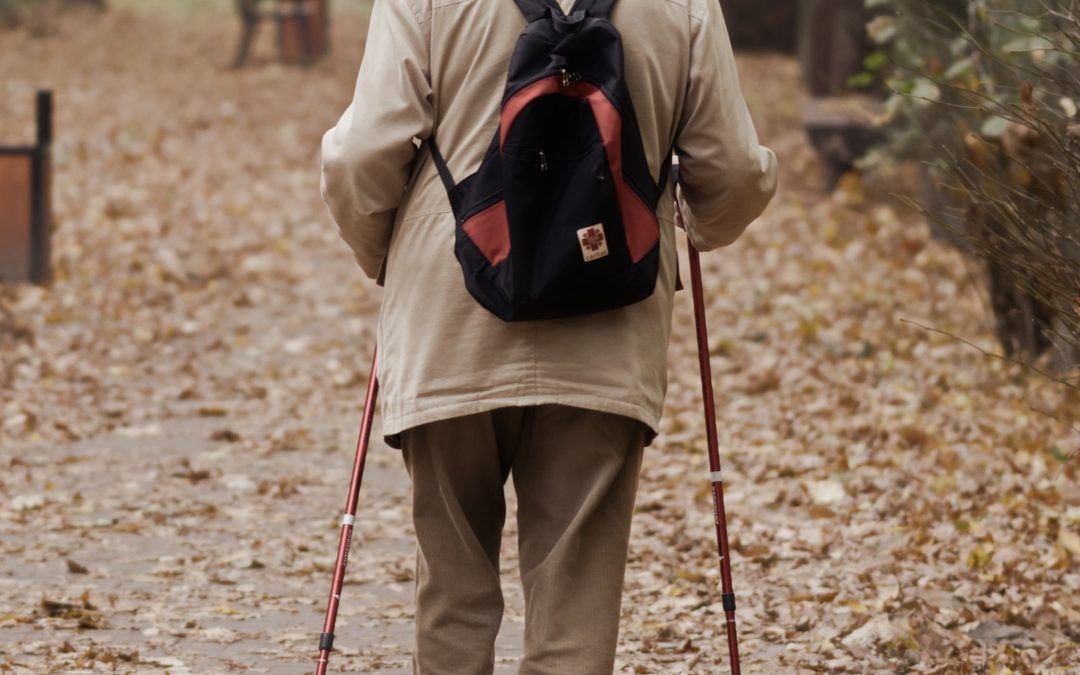“I don’t want to get old and decrepit!” Have you ever said or heard this? Or there’s this quote by Hunter S. Thompson; “Life should not be a journey to the grave with the intention of arriving safely in a pretty and well-preserved body, but rather to skid in broadside in a cloud of smoke, thoroughly used up, totally worn out, and loudly proclaiming “Wow! What a Ride!”.
Based on what’s going on around us, these are fair statements. There are way too many elderly folks limited by their poor health and lack of strength and mobility. But what if you could live a long life with great cognition, mobility, strength, flexibility, balance, and emotional and spiritual health? That’s the ride I want to be on.
Our life expectancy and the quality of that life are impacted by our habits and lifestyle choices. Over 65% of deaths today are due to lifestyle diseases, in other words, due to the choices that we make. Let that one sink in. Can’t we just make better choices? Easier said than done. Making better choices and changing habits can be a challenge for many of us. If it were easy, there would be lots more people living well into their 80s, 90s or even 100s+. Not just living a long time, but living healthy, productive, long lives. The goal here is quality, not just quantity.
It’s time to take matters into your own hands so that you can set yourself up for a fighting chance to achieve healthy longevity! First, it’s important for you to understand the difference between your chronological age and your biological age. Your chronological age is based on how many years you have lived. You have no control over this. Your biological age is based on how old your cells are. This one can be impacted by your choices and your lifestyle, good or bad.
One way to measure your biological age is by testing your telomere length. I don’t think the testing is necessary, but some find it helpful in order to track progress. With conflicting evidence, the jury is still out on the effectiveness of the testing. You don’t need to know the state of yours to take steps to lengthen them. Track your progress by how you feel.
OK, what the heck is a telomere? It’s the protective end caps on our chromosomes somewhat like the cap on the end of a shoelace. It protects them from damage or aging. As cells divide, which they do every second of your life, the telomeres will naturally shorten over time which leads to aging and age-related conditions. Your lifestyle choices can certainly speed up or slow down this process.

Here are 7 steps you can take to lengthen yours and improve your quality of life now and as you enter your golden years.
1. Employ a Positive Mindset Practice Gratitude. Journal positive affirmations. Live with purpose. Surround yourself with a like-minded community, friends, and family. Focus on the good. Focus on the positive. Have fun, laugh and play.
2. Flood Your Body with Good Nutrition Eat an anti-inflammatory diet and maintain a healthy weight. Avoid refined sugar, grain, vegetable oil and processed food. Avoid smoking and minimize alcohol. Eat a healthy balance of macronutrients. We all have different needs, but you need enough protein to maintain your muscle mass and avoid sarcopenia (loss of muscle tissue as a natural part of the aging process). According to Dr. Gabrielle Lyon (a functional medicine physician specializing in Muscle-Centric Medicine), the recommended daily allowance for younger and middle-aged adults is 1.2 grams per kilogram of protein per day. For the elderly, she recommends 1.6 to 2.2 grams per kilogram per day for optimal health. Ample healthy fats will support brain health. Lower carbohydrates (typically 150 or less) to manage your sugar and insulin levels. Intermittent fasting is a great tool too, with a minimum of 12/12 (eating/fasting). Read more on intermittent fasting here.
3. Manage Stress Be mindful. Practice yoga, deep breathing, meditation, grounding or the Emotional Freedom Technique. Disconnect and walk in nature.
4. Get Quality Sleep A good night’s sleep starts as soon as you wake up. Get morning sunlight exposure to reset your internal body clock. Develop a bedtime routine. Avoid excessive artificial light and digital stimulation after dark. Install f.lux on your mobile phones and computers to reduce the amount of blue light emitted by your screens or use blue-blocking glasses.
5. Do Functional Body Movement Exercises Move your body frequently by walking, dancing, swimming or doing whatever you enjoy. You can’t out-exercise a sedentary lifestyle. Do bodyweight exercises for lean muscle mass and to metabolize fat. Occasionally get your heart rate up by sprint workouts which can be done in as little as 4 minutes. These can be adapted to your fitness level.
6. Keep Your Brain Fit Your brain is a muscle, exercise it. Engage in creative and intellectual activities to nurture your mental health and overall well being such as puzzles, crosswords, Sudoku, play an instrument, learn a foreign language, or pick up a new hobby. Try to learn something new every day.
7. Minimize Toxic Exposure Filter your air and water. Ensure your food sources, and body care and cleaning products are as chemical and toxin-free as possible. Support your body’s ability to detox by staying hydrated, dry brushing, rebounding, infrared saunas or cold showers.
Now go out there and make good choices! Your grandkids will thank you.
In Health,
Coach Nanette



